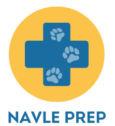The North American Veterinary Licensing Examination (NAVLE) consists of a total of 420 questions. This crucial assessment for veterinarians is composed of multiple-choice questions that cover a broad range of knowledge essential for the practice.
Eager to gauge your readiness? You won’t want to miss the additional insights on exam structure, time management, and study strategies that await in this article.
Embark on your journey to conquer the NAVLE with confidence, equipped with the key numbers and a roadmap to success.
- Introduction to the NAVLE
- What Is the NAVLE?
- Exam Structure and Content
- NAVLE Question Format
- Total Number of Questions on the NAVLE
- Exam Duration and Time Management
- Preparing for the NAVLE: Study Tips and Resources
- Importance of Practice Tests
- NAVLE Passing Score and Question Weightage
- Frequently Asked Questions about the NAVLE
- Strategies for Answering Multiple-Choice Questions
- Conclusion: Key Takeaways about the NAVLE Question Count
Introduction to the NAVLE
For many aspiring veterinarians, the North American Veterinary Licensing Examination (NAVLE) represents a significant milestone on the path to professional practice. As you navigate the final stages of your veterinary education, understanding the scope and structure of this crucial test is essential. From the moment you embark on your NAVLE journey, it’s wise to familiarize yourself with its intricacies, particularly the number of questions involved. When you’re informed about what to expect, your preparation becomes more targeted, your practice sessions more efficient, and ultimately, your chances of success on the NAVLE are greatly increased.
What Is the NAVLE?
The NAVLE stands for the North American Veterinary Licensing Examination—a requisite hurdle for every veterinary graduate in the United States and Canada aiming to practice professionally. The examination is orchestrated by the International Council for Veterinary Assessment (ICVA), and it serves a pivotal role in ensuring that new veterinarians meet the expected standards of knowledge and proficiency. Diving into the context and importance of the NAVLE, you might think of it as both a rite of passage and a rigorous assessment that affirms your readiness to handle the diverse challenges in the field of veterinary medicine.
Exam Structure and Content
The NAVLE is carefully designed to examine your aptitude across a broad spectrum of veterinary science. It’s comprised of multiple-choice questions that span across seven testing blocks, each teeming with 60 questions that target knowledge about common domestic animal species. As you delve deeper into the content, you’ll find questions themed around real-life scenarios you’re likely to face in practice, demanding both foundational knowledge and applied critical thinking. This blend of theory and practical application ensures that the NAVLE is not merely a test of memory but an evaluation of your complete veterinary competence.
NAVLE Question Format
When you sit for the NAVLE, you’ll encounter a series of multiple-choice questions, but don’t let the straightforward format mislead you into underestimating their complexity. Each question is crafted to simulate a clinically relevant scenario, prompting you to select the best possible answer among the presented options. This approach aims to gauge your critical thinking and decision-making skills, which are indispensable in the real-world veterinary practice. Becoming adept at navigating these questions requires practice and strategy, but with the right mindset and preparation, you can enhance your proficiency significantly.
Total Number of Questions on the NAVLE
So, just how many questions are on the NAVLE? The answer is a formidable 420. While daunting, understanding this figure is crucial for devising an effective study plan. This large number ensures a comprehensive assessment of your veterinary knowledge and skills—each question represents an opportunity to demonstrate your readiness for the field.
Exam Duration and Time Management
The NAVLE is a marathon, not a sprint, coming in at a lengthy 7.5 hours. With 420 questions to answer, mastering time management is non-negotiable. You will have to pace yourself, balancing speed with accuracy, and ensure that you have allocated enough time for each block of questions. It might surprise you how swiftly time can pass when you’re deep in concentration, so it’s vital to practice pacing in simulated exam conditions before the actual test day.
Embracing the challenge of the NAVLE’s volume of questions with a pragmatic approach to time management can make all the difference. When preparing, try out various strategies—like sectional timings or mini-breaks—to find what best helps you deliver a steady and sustained performance throughout the exam. Remember, this is about endurance as much as expertise; pacing yourself effectively can help you maintain sharpness from the first question to the last.
Preparing for the NAVLE: Study Tips and Resources
When it comes to tackling the NAVLE, a strategic approach to studying is paramount. With 420 questions to prepare for, you’ll need resources that encompass the breadth and depth of the material covered on the exam. Assembling a study arsenal should be one of your initial steps. Consider leveraging a variety of tools: from comprehensive review books to detailed study guides, these materials offer a structured way to absorb the vast amount of information.
Employ flashcard systems for memorization and retention of key facts. These can be digital or traditional cards—whichever suits your learning style. And if you thrive on interactive learning, online review courses can offer a more engaging way to review the material. Check out the resources recommended by the Ohio State University’s Veterinary Medicine Library for a curated selection of study materials that can help guide your preparation efforts (OSU’s Veterinary Medicine Library for NAVLE Preparation).
Remember, the variety in your study routine not only keeps you engaged but also exposes you to different ways questions might be framed on the exam. Balancing your personal study with group discussion can also bolster your understanding—there’s immense value in learning through shared knowledge and diverse viewpoints.
Importance of Practice Tests
Taking practice exams should be a non-negotiable component of your prep work. These practice runs are invaluable, not just for familiarizing you with the stylistic nuances of NAVLE questions but also for honing your test-taking stamina. You can find official practice exams, like the NAVLE Self-Assessment, which reflects the experience of the actual exam with 200 questions to work through (ICVA NAVLE Self-Assessment). Taking these allows you to assess where your strengths and weaknesses lie, so you can adjust your study plan accordingly. They also grant you the opportunity to practice pacing and to develop a strategy for managing your time effectively with such a high volume of questions.
NAVLE Passing Score and Question Weightage
As you prepare, it’s crucial to comprehend how the NAVLE is evaluated. Each of those 420 questions is weighted equally, contributing to your final score. Knowing this, you should approach each question with the same level of attention and care. Understanding the NAVLE’s scoring system empowers you by framing your objective clearly: aim for consistency in performance across the exam sections.
Scoring ranges from 200 to 800, with 425 designated as the minimum passing score. Reflect on this number as you move through practice exams and track your progress (ICVA NAVLE FAQs). It’s not about simply answering questions correctly but ensuring your overall score reflects a comprehensive mastery of the veterinary curriculum.
Frequently Asked Questions about the NAVLE
It’s natural to have queries about the NAVLE, given its importance in your veterinary career. Questions often arise regarding the exam’s format, scheduling, retakes, and the scoring process. The ICVA website provides a detailed FAQ section that addresses these concerns, clarifying information such as eligibility verification, testing window and deadlines, as well as the retake policy which allows up to five attempts with possible appeals for additional attempts (ICVA NAVLE FAQs). Reviewing these questions can alleviate uncertainties and aid in planning your approach to taking the NAVLE.
Strategies for Answering Multiple-Choice Questions
When facing a multitude of questions like those on the NAVLE, it’s essential to have a game plan for tackling multiple-choice queries. Practices such as carefully reading each question, employing the process of elimination, and managing your time on a per-question basis become indispensable. Resist the urge to second-guess yourself—often, your first instinct is the right one. Be cautious of answer choices phrased in absolute terms, as they may be designed to mislead.
Veterinary students find these tips via resources like the VetPrep blog, which specifically addresses test-taking strategies for those in the veterinary field (VetPrep’s Test-Taking Tips). Cultivating these tactics through repeated practice renders the formidable task of fielding 420 questions less intimidating.
Conclusion: Key Takeaways about the NAVLE Question Count
As you approach your NAVLE preparation and consider “how many questions are on the NAVLE,” remember that each of the 420 questions represents a chance to shine—to show the depth of knowledge that you’ve accrued during your veterinary studies. By now, you understand that the NAVLE is a comprehensive test designed to assess your suitability for veterinary practice, and you’re no longer in the dark about what to expect.
Use the NAVLE’s question count as a guide for pacing your preparation: aim to build a solid knowledge base, refine your test-taking skills with practice exams, and develop a strategy for navigating the exam. With tailored study tips, a grasp of NAVLE scoring nuances, and an understanding of how to effectively approach multiple-choice questions, you’re now equipped to take on this professional milestone. The countdown to bridging the gap from student to licensed veterinary practitioner begins with a single question—and now, you’re ready for all 420 of them.
Discover how many questions are on the NAVLE and prepare effectively for your veterinary licensure exam with our guide.

